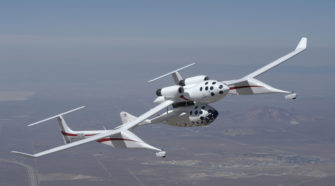Posts in tag
Issue #9 (October 2014)
Blazing a trail: SpaceShipOne and the Ansari X Prize
What kind of man would live where there is no daring? I don’t believe in taking foolish chances, but nothing can be accomplished without taking any chance at all. – Charles Lindbergh October 4th 2014 marks the 57th anniversary of Sputnik 1’s launch, the beginning of the Space Age. But ten years before that date …

